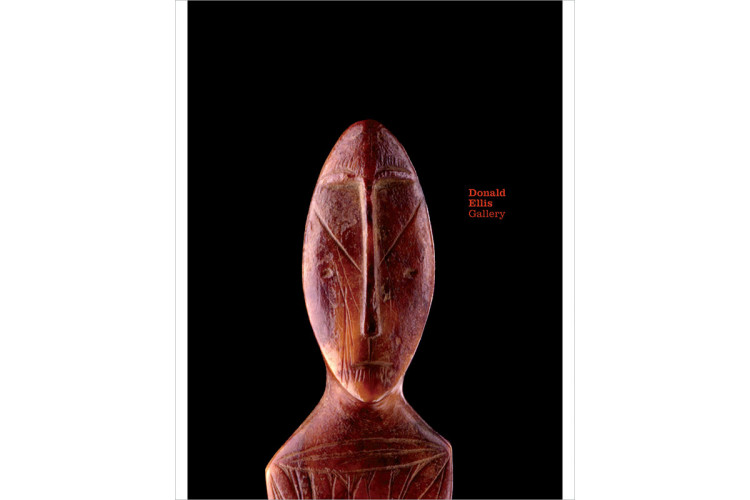
2004
$30.00 USD
ca. 1870
wood, red, black paint
height: 9"
Inventory # CN4313-162
Please contact the gallery for more information.
Private collection, Washington State
Donald Ellis Gallery, Dundas, ON
Private collection, Toronto, ON
Donald Ellis Gallery catalogue, 2004, pg. 39
Smithsonian Institution, cat. no. 2665 - See: King, Jonathan. Portrait Masks From The Northwest Coast of North America. London: Thames & Hudson, 1979, pg. 57, pl. 52
Philadelphia University Museum, cat. no. 45-15-2 – See: Ibid, pg 56, pl. 50
Ipswich Museum, cat. no. DLJ 24.1976 – See: Ibid, pg. 62, pl. 57
Unlike many types of Northwest Coast masks which typically display varying degrees of transformation and/or abstraction, portrait masks are so-called due to their naturalistic quality. In the fine mask seen here the wood is sensitively carved to reflect the complex bone structure and muscles of a human face. Fine lines of black hair are diligently painted from the parting of the hair down to the ears. Great attention is paid to the surface of the skin, the wrinkles on the forehead and around the eyes and mouth, evoking a particularly arresting lifelike quality. Portrait masks range in their expressions. In the present example, a rounded double chin, widely opened eyes and a faint smile lend a friendly, almost humorous quality to the mask. This is a Haida artist’s interpretation of the face of his own people. The mask is either a portrait of a specific individual or a mythic ancestor. Danced at important social occasions such as the potlatch, portrait masks relayed the oral history of the family or people it belonged to. The performance dramatized family histories, often representing ancestors who took part in historical or mythical events. The large labret displayed in the lower lip of this mask was a prerogative of older Haida women of high rank. The symmetric forms painted in red and black on the forehead, the cheeks, and around eyes and chin, represent facial tattoos or paint further identifying the woman’s clan affiliations. The painting and incisions on portrait masks readily compare to ceremonial face painting patterns recorded by 19th century ethnologists and on occasion captured in early photographs of the period.

$30.00 USD